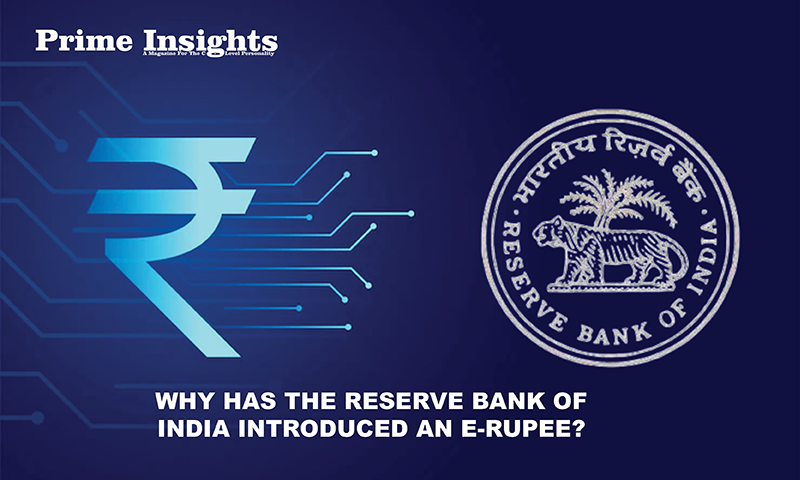WHY HAS THE RESERVE BANK OF INDIA INTRODUCED AN E-RUPEE?
The CBDC (Central Bank Digital Currency) will be released for use in retail transactions by the RBI (Reserve Bank of India). When the retail e-rupee (or CBDC-R) is released, it will be nearly a month after the CBDC was released. The launch of the CBDC-R by the RBI would mirror that of the e-dollar, with the introduction taking place in four major cities, including Delhi and Mumbai.
Since it is just a test run for CBDC-R, we know that the pilot programme RBI is planning for the digital currency will involve a small number of users and businesses in a limited number of locations. The HDFC Bank, State Bank of India (SBI), IDFC Bank, ICICI Bank and others will participate in the pilot program’s initial phase.
E-rupees are a form of currency that has been used for some time, says RBI. The central bank provided more detail on the reasons for implementing the CBDC, the technical concerns, design and policy implications of this radical shift in a concept note published on October 7.
However, many concerns have been voiced regarding RBI’s implementation of CBDC. It was generally accepted that the central bank intended to outlaw cryptocurrency use. More than ever, it is crucial to grasp the distinctions between CBDC and crypto transactions.
CBDC (Central Bank Digital Currency)- An Explanation
A CBDC is a form of digital money backed or issued by the central bank of a nation-state. Take the CBDC definition at face value. It should be noted that it can be exchanged at will for the legal tender money now in use because the same central bank issued it. CBDCs will have an unlimited lifespan because they are not tied to any physical medium of exchange and can thus never be destroyed or lost.
Regarding CBDCs, the RBI’s e-rupee pilot programme recognises two varieties of digital currency: wholesale (CBDC-W) and retail (CBDC-R). As of the latest reports, CBDC-W was introduced last month and is used for interbank and wholesale transactions. Meanwhile, CBDC-R is scheduled to debut on December 1 and is used for retail trade.
Cryptocurrency and UPI vs CBDC
As was previously indicated, there was an early consensus that the central bank saw cryptocurrencies as something to be avoided at all costs. Cryptocurrencies are gaining popularity around the world. Thus the Centre has also implemented steep tariffs on them. Nonetheless, one thing became very evident with the introduction of CBDC. There is something distinct; perhaps CBDC is not the same as crypto. Let’s separate the two.
CBDCs are distinguished from cryptocurrencies by their backing by a sovereign nation or a central bank. However, the latter is not backed by any central bank or government and is thus termed private money. When it comes to payments, however, crypto and CBDC are essentially interchangeable, and settlement occurs instantly.
Back-end settlement between two banks occurs for UPI transactions. However, because cryptocurrency and CBDC allow for money programming, settlements can occur instantly. There is still scepticism about the plan, especially about the retail e-rupee, even if RBI is ready to roll out CBDC on a large scale.
Concerning CBDCs- Some Difficulties
As with any digital currency, CBDC risks the loss of personal information and financial ruin. Despite extensive study, many nations reportedly have delayed implementing CBDC because of legitimate worries about personal data protection and network integrity.
Since CBDCs are still online, it is believed that they may store sensitive information about their users and financial transactions. Consider the consequences if this information ever falls into the wrong hands. If that is the case, it can be exploited for espionage, data theft, and other forms of cybercrime with relative ease. As a result, it is widely held that establishing security protocols is crucial to reducing dangers during introducing CBDCs.



Comments are closed.